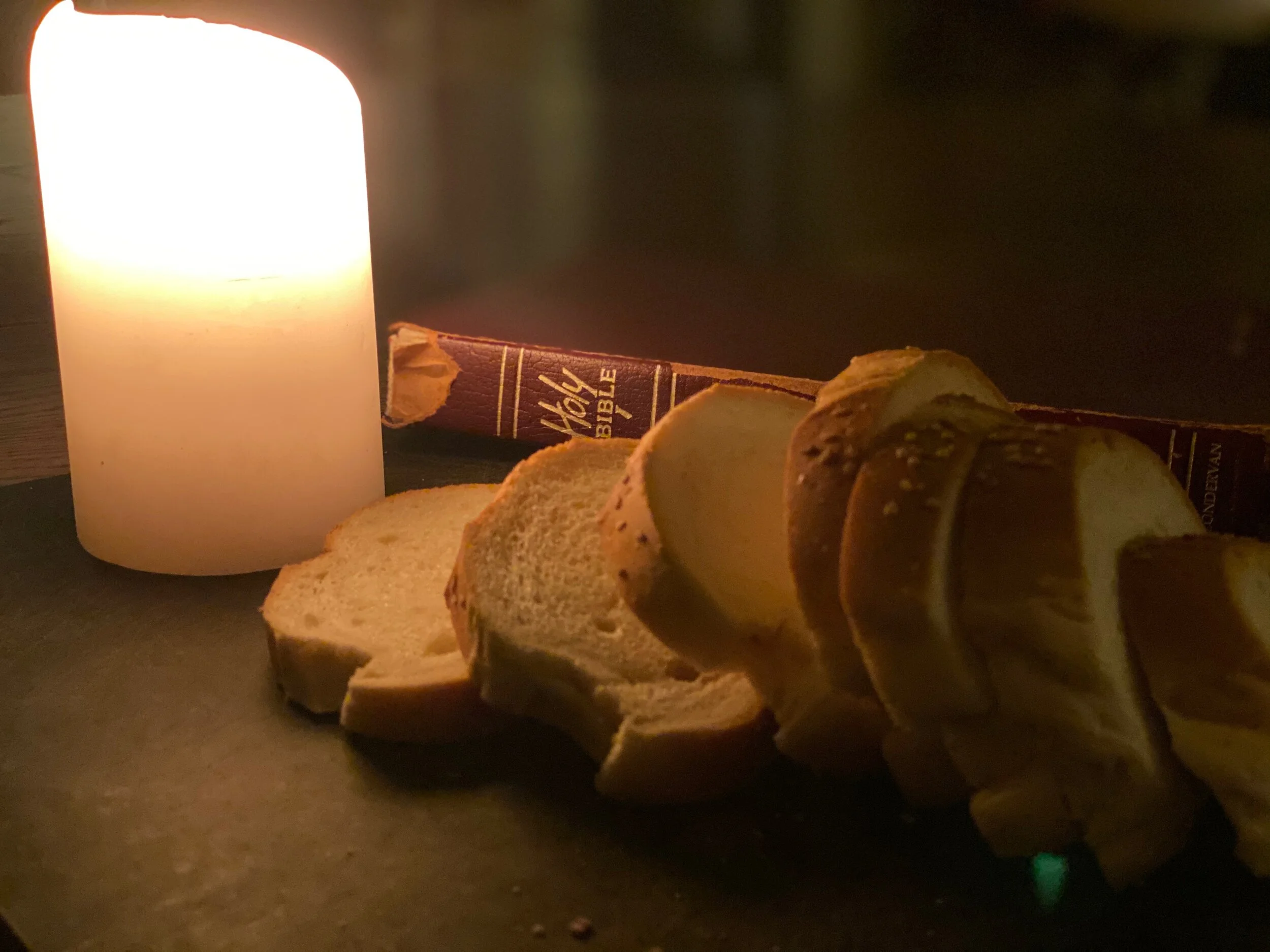Maundy Thursday Memorial (Abram Van Engen)
The Thursday before Easter is known as Maundy Thursday. “Maundy” is derived from the Latin word for “command,” and refers to Jesus’ commandment to the disciples: “Love one another as I have loved you.”
On Maundy Thursday in my church, we gather each year in the basement, as though huddled in refuge from a storm. Tables sit in a semi-circle, linked in a line, and we share a meal to begin the night. After supper, lights are dimmed and candles lit. We begin reading scripture, passing the story down, and one-by-one we extinguish the flames. We sing, and we wash each other’s feet. And when the service is nearly ended, we celebrate communion: the Last Supper. Then in silence, we file out into the night.
This is a service my children know well. They remember it from year to year because it is so jarringly different. We sit in an unfamiliar place with food and drink and darkness and light and water and washing and communion and silence—and all of it pushing right up against their bedtimes.
We won’t be gathering this year of course. But our service at home will be no less strange and memorable. We will still sit around a table with candles, and we will still read and hear the story of a savior who emptied himself for others, stooping to wash the feet of his disciples and showing them what it means to love. I will break a normal piece of bread from our everyday loaf and pass it around our normal everyday table. And though it will not be the sacrament itself, I hope it will be sacramental—a burning memory of Maundy Thursday, a day which is itself designed as a memorial.
There is a scene in Marilynne Robinson’s wonderful novel Gilead in which the narrator remembers one of these strange memorials. When he was a child, his community gathered to clean up a church that had burned down. It was raining, and the ash and soot seeped into everything. They buried the ruined bibles and hymnals and pulled down the ruined timber and rafters. And when the narrator hid under a wagon to escape the rain, his father found him there, brought him a biscuit made black with ash, broke it, and shared it with his son:
I remember my father down on his heels in the rain, water dripping from his hat, feeding me biscuit from his scorched hand, with that old blackened wreck of a church behind him and steam rising where the rain fell on embers, the rain falling in gusts and the women singing ‘The Old Rugged Cross’ while they saw to things, moving so gently, as if they were dancing to the hymn, almost. In those days no grown woman ever let herself be seen with her hair undone, but that day even the grand old women had their hair falling down their backs like schoolgirls. It was so joyful and sad. I mention it again because it seems to me much of my life was comprehended in that moment. Grief itself has often returned me to that morning, when I took communion from my father’s hand. I remember it as communion, and I believe that’s what it was.
This meal of broken bread, shared in grief, breaks out in unexpected circumstances time and time again. And the Body of Christ has always been connected by it, from the earliest days up to the present. One of the oldest surviving texts of the church, The Didache, instructs new believers to celebrate this sacrament regularly, and it gives them this prayer for their liturgies: “As this broken bread was scattered over the hills and then, when gathered, became one mass, so may Thy Church be gathered from the ends of the earth into Thy Kingdom.”
The Body of Christ is not known by brick and stone, but by the breaking of bread in every home—from the earliest church gatherings in individual houses of believers to the grandest cathedrals towering above us throughout the world. When I was in college, I visited Spain and hiked along a pilgrimage trail that is over a thousand years old. In León, I stopped on a Sunday and visited a church. I had no idea what was said in that mass, but when the priest lifted the host, I knew exactly what was going on.
Now in Spain, as here, priests and pastors break bread in front of empty pews. But the breaking of the bread still brings us together. The meal of Maundy Thursday is a living memorial that links us to everyone who has ever come to the table, both now and throughout the history of the church.
The Eucharist celebrated at the altar in Spain, along with the communion in my own church, is not the same as a broken piece of bread at home shared with my wife and children. But what I can give tonight to my children is still a memorial, a memory made in memory of that Last Supper so long ago. And I have a feeling that these strange meals at this strange time, shared in darkness with only a dim glimmering of lights, will be memorable for many. I hope what my children might retain from this moment is that the church does not break in the face of great suffering. Instead, it celebrates a savior who emerges in the midst, and through the very means, of brokenness itself.
Abram Van Engen is a Carver Project Faculty Fellow and Associate Professor of English at Washington University in St. Louis.
Further Reading:
Marilynne Robinson, Gilead
Return to The Carver Connections main page.

